Beech Hill
Houses within 10km of this house
Displaying 40 houses.
Houses within 10km of Beech Hill
Displaying 40 houses.
| House name | Description | |
|---|---|---|
| Benmore | In 1778 this was a Daly property and in 1786, Wilson also refers to it as the seat of Mr. Daly. In 1824 Mr. O'Connor was listed as a non-resident proprietor in county Galway. The OS Name Books record the proprietor of Benmore as Hugh O'Connor with a Mr. Dowdall acting as his agent in the 1830s. In 1855 Valentine O'Connor Blake was leasing 584 acres and buildings valued at £8 in the townland of Benmore, parish of Grange, barony of Loughrea, to Denis Deely. The original house does not appear to be extant. | |
| Woodlawn | Wilson mentions Woodlawn as "a very superb ediface", the seat of Frederick Trench, in 1786. In 1837 Lewis recorded Woodlawn as the seat of J. Trench and mentions the extraordinary mausoleum nearby. At the time of Griffith's Valuation, the house and buildings at Woodlawn were valued at £125, one of the highest buildings valuations in county Galway at that time. In 1894 Slater refers to Woodlawn House as the seat of John Samuel Barrett. By 1906 it had a value of £150 and was in the possession of Lord Ashtown. Woodlawn House is still extant but unoccupied. |

|
| Tooloobaun House | At the time of Griffith's Valuation, Henry Hudson was leasing this house, then valued at almost £4, from John R. Hudson/Hodson. It is not shown on the later 25-inch Ordnance Survey map of the 1890s. | |
| Rathville | At the time of Griffith's Valuation, John Blake was the holder of a property at Carrowreagh, barony of Athenry, valued at £10. Rathville House is still extant and occupied. In 2013 it was offered for sale. |

|
| Raford | The National Inventory of Architectural Heritage suggests that Raford House was built c.1760. Wilson refers to it as the seat of Captain Daly in 1786. It was being leased by Denis Bodkin from Harriett Daly at the time of Griffith's Valuation, when it was valued at £40. John Archer Daly was the owner of Raford House in 1906 when it was also valued at £40. Raford is still extant and occupied. Modern development has taken place on part of the demesne lands. |

|
| The Cottage | At the time of Griffith's Valuation, Patrick Trumple was leasing this house, in the townland of Cloonmain, parish of Killoran, from the Clonbrock estate. It is still extant and occupied. |
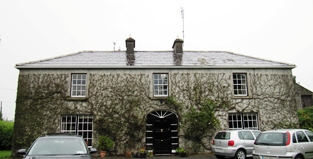
|
| Eastwell | In 1837 Lewis records Eastwell as the seat of C. Usher. At the time of Griffith's Valuation it was occupied by Christopher Usher and the buildings were valued at £79. By 1906 it was in the ownership of William A. Usher and was valued at £81. This house is no longer extant but extensive remains of stables, demesne and walled garden survive. |
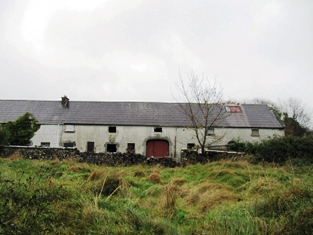
|
| Rathglass | In 1814 Rathglass House was the residence of Bernard Rochford. In November 1850 Mark Lynch was occupying the house. At the time of Griffith's Valuation it was occupied by James M. Bourchier. It is still extant. |
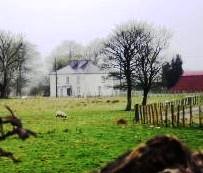
|
| Mountbernard | Home of Bernard Browne in the 1830s. Occupied by James C. [Leslie] Foster at the time of Griffith's Valuation, leasing from Andrew Browne, when the house was valued at £35 Foster was married to Henrietta, daughter of Sir Ross Mahon of Castlegar. The house is now in ruins. |

|
| Killimer Castle | Originally a tower house, Killimor Castle was modernised in the early 1700s by the addition of two slated wings. The Dalys continued to reside there until the end of the 18th century when the castle and demesne were leased to Dominick Burke of Slatefield. In 1837 Lewis records it as the seat of Hyacinth Burke. Dominick J. Burke was still leasing the house at Killimor from Rev. Nicholas Devereux at the time of Griffith's Valuation. It was then valued at £16. The house at Killimordaly had fallen into disrepair but has been restored. |

|
| Killagh | Lands at Killaghmore and Clonecallin amounting to 635 acres were granted to Edmond Donnellan in 1684. Wilson refers to it as the seat of Mr. Donnellan in 1786. Stephen Donnellan was occupying the property at Killagh, valued at £33, at the time of Griffith's Valuation. In 1906 it was in the possession of Stephen J.R. Donnellan. It is no longer extant. |

|
| Temple | This property is labelled Temple House on the 25-inch Ordnance Survey map having been built after the publicaiton of the 1st edition maps. In the 1850s William Poole was leasing the property from the Graves estate when the buildings were valued at £10. Substantial ruins still exist at the site. |

|
| Colmanstown | Originally a French property which became a Quaker settlement. Griffith's Valuation describes the buildings as a herd's and steward's house occupied by Edward Barrington and partners and then valued at £30. Buildings on both sides of the road mark the site of Colmanstown. Only the walls remain of some of these buildings, others are still in use. |

|
| Attymon House | At the time of Griffith's Valuation this house was occupied by Mary Broderick, who later married Lord Dunsandle. It was then valued at £8. In 2008 the current house at this site was offered for sale. The sale details state that it was originally built as a hunting lodge but later extended. See Irish Times 22 May 2008. |

|
| Tiaquin | At the time of the Burke sale in 1851 the house was described as an 'old fashioned cottage style' type of building. A gable end of the house still stands with the nearby farm buildings still in use. |

|
| Creeraun | At the time of Griffith's Valuation the townland was held by Margaret O'Kelly and the house and some land was occupied by Anthony O'Kelly. In the sale particulars of Creeraun in 1889 the house is marked on the map as 'in ruins'. |

|
| Carrownea | At the time of Griffith's Valuation, William Evans was leasing a property valued at £10 at Carrownea, parish of Ballymacward, from the Clancarty estate. Earlier in 1837, Lewis had recorded Carrownea as the seat of J. Fitzsimons. Flynn writes that, in 1850, the lease of Carrownea House and lands passed to William Evans, brother of John Cannon Evans of Cross House. There is still an extant house at Carrownea. | |
| Hampstead | Built in the mid-18th century. In 1814 Hampstead House was the residence of John Bodkin. In 1837 Lewis recorded it as the seat of F.Davis. In 1853 it was occupied by Thomas Pilkington Davies who was leasing it from George Davies. At the time of Griffith's Valuation it was leased by the Morgan family to Martin Blake. In 1906 it is recorded as being part of the estate of James Johnston. It is now a ruin. |

|
| Greenhills | Samuel Barrett was leasing a house valued at £24 from John Blakeney in 1856. In 1837 Lewis had recorded Greenhills as the seat of S. Barrett. In 1885 Walford noted that it was the residence of Mrs. Barrett, widow of John Samuel Barrett. In 1906 Greenhills was part of the estate of Lord Ashtown (Trench). The house is still extant but derelict. |

|
| Ballinderry (Comyn) | Lewis records Ballinderry as the seat of J. Comyn in 1837. At the time of Griffith's Valuation it was being leased by Andrew Comyn from the Ecclesiastical Commissioners and was valued at £16. Recorded as the residence of Col.John Comyn in 1894. In 1906 it was the property of Andrew N. Comyn. Ballinderry House is still extant and is now operated as a luxury country house hotel. See www.ballinderrypark.com. |

|
| Hillswood | In 1837 Lewis recorded Hillswood as the seat of Hyacinth Donnellan. At the time of Griffith's Valuation in 1856 Edmund Donnellan was leasing the house at Hillswood, together with almost 300 acres, to Obadiah Holland. It is no longer extant. | |
| Woodlawn Hotel | At the time of Griffith's Valuation, Lord Ashtown was leasing a hotel property valued at £13 in the townland of Carrowmore, barony of Kilconnell, to William Menziey. | |
| Ashbrook | In June 1854 William Kelly was recorded as the owner of the property at Ashbrook, formerly Bouilagh, parish of Killaan, barony of Kilconnell. At the time of Griffith's Valuation the house at Ashbrook, valued at £20, was the residence of Charles B. Lynch. It is no longer extant. | |
| Woodberry House (Kilconnell) | William Hemsworth was occupying this property, valued at £10, at the time of Griffith's Valuation when he was leasing it from Seymour Harrison. In 1894 Slater states that it was in the possession of Patrick J. Davy and he is also listed as the owner in 1906. . Earlier, in 1814, Leet noted it as the seat of Peter Daly. It is still extant and occupied. |
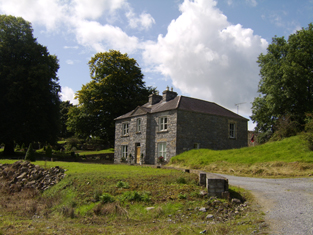
|
| Clooncah | In 1778, Clooncah was a property of the Daly family. and Wilson mentions it as the seat of Peter Daly in 1786. Lewis records it as the seat of P. Daly in 1837. William Galway held this property at the time of Griffith's Valuation, when it was valued at £30. According to local tradition, Clooncah House was demolished in the early twentieth century and the stone used in the construction of the new National School at Attymon. | |
| Caraunbeg | Obadiah Holland was leasing a house valued at £8 and over 240 acres at Caraunbeg, parish of Killimordaly, barony of Kilconnell, from Lord Ashtown at the time of Griffith's Valuation. It is no longer extant. | |
| Caraunmore/Anneville | Rev. Joseph Seymour was leasing a house valued at £9 together with over 350 acres at Caraunmore, parish of Killimordaly, from the Ashtown estate at the time of Griffith's Valuation. This is possibly the house which Lewis records as Anneville, the seat of Rev. J. Seymore, in 1837. It is now a ruin. | |
| Streamsford | The house at Streamsford, parish of Killimordaly, was leased from James O'Hara to Patrick Cogovan.and valued at £10 at the time of Griffith's Valuation. It is still extant and occupied. |
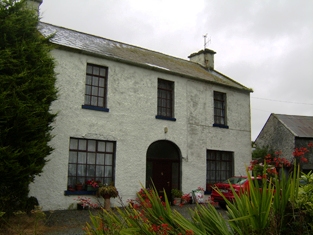
|
| Carnakelly | Carnakelly was the original house from whch the Dalys of Dunsandle descended. John Monaghan was leasing this house, valued at £4 together with over 100 acres, from Lord Dunsandle's estate, at the time of Griffith's Valuation. |

|
| Mountventure | Occupied by John Evans in 1814. James Raftery was leasing it from the Clancarty estate at the time of Griffith's Valuation when it was valued at almost £10. The house is no longer extant though some walls remain. | |
| Kiltullagh House | In 1786 Wilson mentions "Kiltolla" as the seat of Patrick D'Arcy. Lewis records Kiltullagh House as the seat of J. D'Arcy in 1837. At the time of Griffith's Valuation, Pierce Joyce held a herd's house here valued at almost £4. It is described as "in ruins" on the 25-inch Ordnance Survey map of the 1890s and these ruins are still extant. |

|
| Cloonatleva | Samuel Johnston was leasing a property valued at almost £5 at Cloonatleva Lower, barony of Kilconnell, from the Hodson estate at the time of Griffith's Valuation. The original building is not shown on the later 25-inch Ordnance Survey map of the 1890s. Modern farm buildings occupy the site now. | |
| Carrowroe House | In 1786, Wilson refers to "Carrorowe, at present uninhabited". At the time of Griffith's Valuation, John Dennis was leasing a property at Carrowroe North, barony of Athenry, valued at £15, from Lord Dunsandle's estate. Buildings remain at the site. |

|
| Sprucehill House (Kilconnell) | Sprucehill House is noted as the residence of Samuel Harrison in 1814. By the time of Griffith's Valuation the occupied property in this townland is a herd's house, part of the Longworth estate and valued at £2. Sprucehill House is described as "in ruins" on the 25-inch Ordnance Survey map of the 1890s. | |
| Cloonatleva Mill | James Tyrrell was leasing a house and mill, valued at £6, together with land, at Cloonatleva, barony of Kilconnell, from the Hodson estate at the time of Griffith's Valuation. The building is described as "disused" on the 25-inch Ordnance Survey map of the 1890s. | |
| Gortakeeran | John A. Daly owned buildings valued at almost £8 at Gortakeeran in 1906. At the time of Griffith's Valuation this townland was owned by John B. Daly including a herd's house valued at 15s. | |
| Abberanville | Abberanville House is descibed as "in ruins" on the 1st edition OS map. The townland, containing 24 acres, was part of John B. Daly's estate and was leased to John Blake when the buildings were valued at £15s. The ruins of a hemp factory were located nearby. There are no buildings at the site now. | |
| Killaghbeg | Denis Deely was leasing a property valued at £4 from the estate of Hon. John Plunkett at the time of Griffith's Valuation. The Ordnance Survey Name books indicate that this townland was part of Lord Clonbrock's estate in the 1830s. The house is labelled Killaghbeg House on the 25-inch Ordnance Survey map of the 1890s. In 2010 it was extant but unoccupied. |
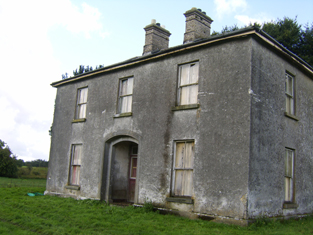
|
| Alloonbaun/Church View | At the time of Griffith's Valuation Rev. Joseph Seymour was leasing this house from the Clancarty estate when it was valued at almost £8. It is still extant and occupied. |
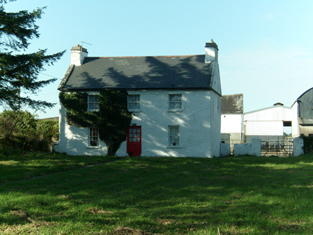
|
| Newgrove House | In 1786 Wilson refers to Newgrove as the seat of Mr. Blake. At the time of Griffith's Valuation, the property is described as a care-takers house, and leased to John H. Blake by the Wallscourt estate. It is labelled Newgrove House on the 1st edition Ordnance Survey map but is described as "in ruins" on the later 25-inch map of the 1890s. |

